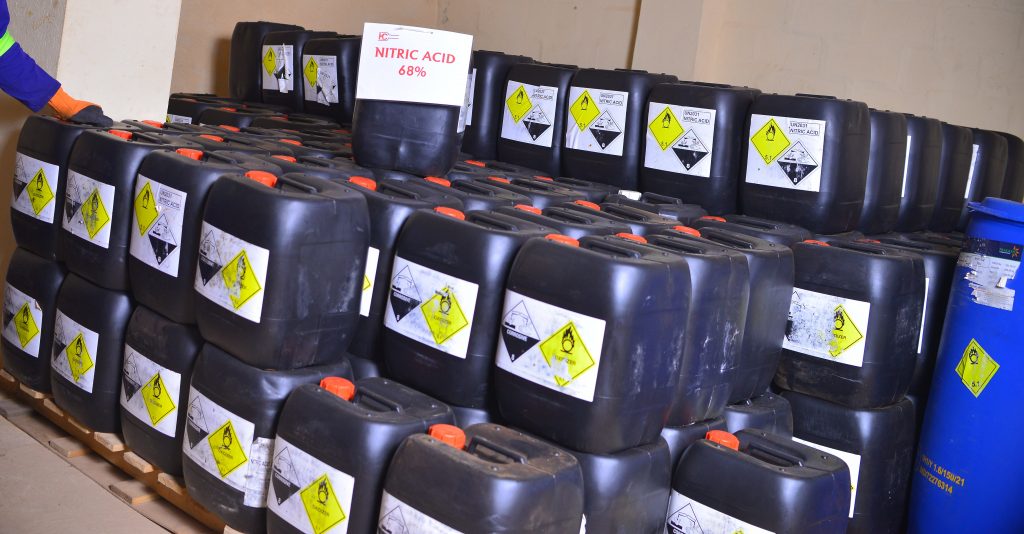Nitric Acid

Nitric acid is a clear colorless or yellowish liquid with a suffocating odor and generates fumes. It is very toxic by inhalation and corrosive to metals and tissue. Nitric acid is very soluble in water. On exposure to heat nitric acid decomposes to nitrogen oxide and hydrogen nitrate.
Nitric acid is a highly oxidizing agent and reacts violently with combustible or readily oxidizable materials. Nitric acid has a concentration of 68%. Nitric acid is a strong acid with a pH of 1 and a specific gravity of 1.41.
Uses:
1: Metal processing
Nitric acid can be used to convert metals to oxidized forms, such as converting copper metal to cupric nitrate. It can also be used in combination with hydrochloric acid as aqua regia to dissolve noble metals such as gold (as chloroauric acid). These salts can be used to purify gold and other metals beyond 99.9% purity by processes of recrystallization and selective precipitation. Its ability to dissolve certain metals selectively or be a solvent for many metal salts makes it useful in gold parting processes.
2: Woodworking
In a low concentration (approximately 10%), nitric acid is often used to artificially age pine and maple. The color produced is a grey-gold very much like very old wax- or oil-finished wood (wood finishing).[21]
3: Etchant and cleaning agent
The corrosive effects of nitric acid are exploited for some specialty applications, such as etching in printmaking, pickling stainless steel or cleaning silicon wafers in electronics.[22]
A solution of nitric acid, water and alcohol, Nital, is used for etching metals to reveal the microstructure. ISO 14104 is one of the standards detailing this well-known procedure.
Nitric acid is used either in combination with hydrochloric acid or alone to clean glass cover slips and glass slides for high-end microscopy applications.[23] It is also used to clean glass before silvering when making silver mirrors.
Commercially available aqueous blends of 5–30% nitric acid and 15–40% phosphoric acid are commonly used for cleaning food and dairy equipment primarily to remove precipitated calcium and magnesium compounds (either deposited from the process stream or resulting from the use of hard water during production and cleaning). The phosphoric acid content helps to passivate ferrous alloys against corrosion by the dilute nitric acid.
Nitric acid is used as an oxidizer in liquid – fueled rockets, its used in the manufacture of explosives, as a laboratory reagent, its aqueous blend is used for cleaning food and dairy equipment, in colorimetric test.

